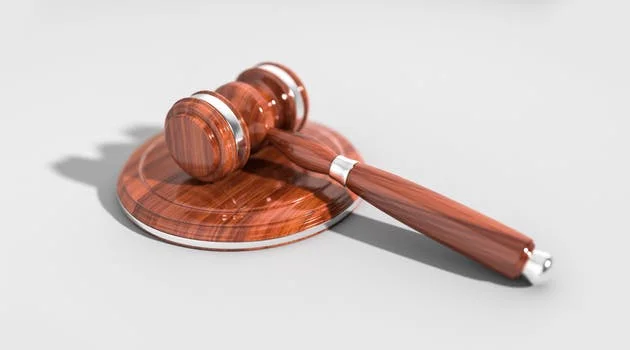Design Patent protection can be an effective means of preventing your competitors from copying unique designs for your products, for example, your medical devices. In contrast to “utility” patent protection, which is the type of patent that the person on the street thinks of when the word “patent” is heard, a “design” patent protects how your product “looks,” that is, instead of how your product functions. Design patent protection may typically be associated with protecting the “artistic” appearance of furniture, jewelry, light fixtures, and the like, but design patent protection can also be used to protect the unique appearance of any product.
In 2016, the subject of design patents became the topic of coffee bar discussions and lunchroom banter when the “smartphone patent wars” between Apple and Samsung became front-page news - one of the related cases had reached the U.S. Supreme Court. Though the confrontation between Apple and Samsung included infringement of utility patents, much of the infringement, much of the public discussion, and the Supreme Court case dealt with the alleged infringement of Apple design patents.
Apple’s U.S. design patents protect the look or appearance of their iPhone®- and iPad® devices, among others. For example, a figure from one of Apple’s U.S. design patents that is the subject of one of the cases appears in Figure 1 below.
Figure 1 - Figure from Apple’s US Design Patent 504,889
Contrary to comments you may have read, Apple had not patented “a rectangle.” No, as described in their patent, Apple patented the unique appearance of an “electronic device” having the unique rectangular appearance shown in Figure 1. Yes, under U.S. patent law, you can protect the appearance of such electronic devices when this look for an electronic device is indeed “new” and “non-obvious.” Though the Apple v. Samsung series of patent cases are still pending, among other things, these cases underscore the importance of design patent protection.
Unlike utility patent applications, which can contain tens or even hundreds of pages of text, design patent applications are substantially limited to drawings. These drawings typically show different views of the invention being protected. The text in a design patent application (and of the design patent) is typically limited to relatively simple descriptions of the images of the design that are shown in the drawings, for example, a perspective view, a top view, a side view, etc. What this means is that, in contrast to utility patents, the drawings in the design patent applications are critical to the scope of the protection being pursued. In fact, without using words, the drawings in the design patent application (and patent) define what specific appearance of the product, or even a portion of the product, is being protected. That is, the drawings illustrate the appearance of the design that competitors must avoid to not infringe the design patent.
Again, the drawings illustrating the invention, and how the drawings illustrate the invention, are critical. For example, the lines of a design patent drawing have meaning: solid lines mean the protected design must have that feature; dashed lines mean the feature can be absent and the product still infringes. What may not be apparent is that including many solid lines in drawings showing many of the fine details of an invention, may better illustrate the invention, but may undesirably “narrow” the patent protection. That is, too many details shown by too many lines may make it easier for a competitor to avoid infringement, by, for example, not having the features shown in solid lines in the design patent drawings. Accordingly, care should be taken when preparing design patent drawings to, for example, limit what is shown only to what is “new” and “non-obvious.”
What does this mean? As always, it depends on the product being protected. However, it does mean that you should want to seek help in preparing such design patent applications.
Recent design patents obtained by Zansors reflect the unique, attractive appearance of their products that characterizes the work of Zansors’ engineers and scientists. For example, Figures 2 and 3 below present images of figures from U.S. design patent No. 771,824 that was recently awarded to Zansors.
Figure 2 - Figures from Zansors US Design Patent 771,824 for a “wearable sensor.”
Figure 3 - Figure form Zansors US Design Patent 771,824 for a “wearable sensor,” as depicted in a typical placement on the neck of a patient.
Also, Figure 4 below presents a figure from U.S. design patent No. 793, 223 entitled "Retail Package for Wearables" that was recently awarded to Zansors.
Figure 4 - Figure from Zansors US Design Patent 793,223 for a “Retail Package for Wearables.”
Accordingly, design patent protection can be worthwhile for any product that you present to the marketplace. Design patent projection can also effectively supplement utility patent protection. However, as I hopefully have made clear above, design patent protection for the unfamiliar can be confusing and sometimes perilous. Therefore, as with home plumbing and brain surgery, you are better served by those familiar with the landscape and who know how to avoid the pitfalls of the unwary. Many patent professionals, including patent attorneys and patent agents, are well versed in design patent practice and law, and can help you obtain the commercially significant design patent protection you are looking for. Obtaining such assistance can help you avoid the roadblocks, the speed bumps, and the outright cliffs that may appear along the way.
John Pietrangelo is a Registered U.S. Patent Agent who owns and operates Tech Valley Patent, LLC. Mr. Pietrangelo has spent over 25 years as an in-house patent engineer, as an associate at a patent firm, and with Tech Valley Patent assisting individual entrepreneurs, high-technology startups, and Fortune 500 companies in protecting their inventions in the U.S. Patent Office and around the world. www.techvalleypatent.com





